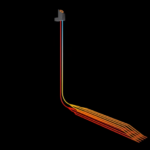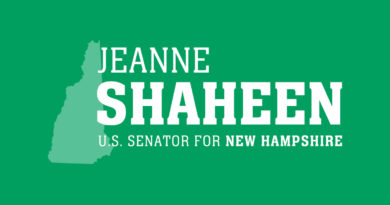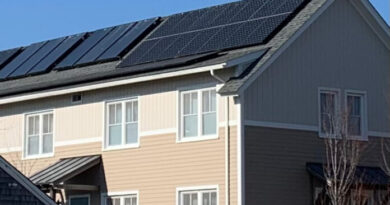[Article] Build Your Own Code
Energy Disrupter
Nobody likes energy codes. This unfortunate fact maintains my popularity ratings, as a writer and enforcer of energy codes, down in the low single digits. Energy codes fall into the same category as speed limits and industrial safety rules—things that society wants but the private sector just can’t or won’t do on its own. For builders and developers, however, the code restrictions seem to pile up year after year, making it ever more challenging to get things built. Isn’t there some way to get those higher-efficiency homes that states and cities are demanding, while still leaving builders some flexibility to build things the way they like?
Such a pathway does indeed exist. A decade ago, Washington State decided that rather than pile on more residential code measures, it would establish a menu of several above-code options and leave it to builders and their clients to pick and choose from that menu. These options were assigned credits based on their predicted energy savings, and builders were free to select any combination that would add up to the required number of credits.
Giving Builders Options
Builders began choosing options based on a mix of the installed cost, ease of incorporating the change, and appeal to their target market segment. The system permitted quick adjustments as market conditions changed and allowed builders to select a different set of choices for a custom view home than they would for a suburban tract home or town house. Most importantly, it facilitated the construction of substantially more-efficient homes across the state, making that higher level of efficiency the new normal for home builders.
So what’s the point of all this? Residential energy codes all focus on improving the performance of new and remodeled homes, reducing energy bills for homeowners and stress on utility grids while mitigating pollution and carbon emissions. The local economies where robust energy codes are in force gradually strengthen as money that otherwise would flow out of town to buy fuel remains circulating in town as wages and profits. (See “Somebody Likes Energy Codes?”)
Somebody Likes Energy Codes?
Builders generally want to do work they’re proud of, but sometimes they get forced into compromises. Strong energy codes are a boon for those already building high-performance homes—there won’t be much cost difference left between your work and the code-minimum houses down the block—and for those whose high-performance ideas keep getting value-engineered into oblivion—a strong energy code puts the long arm of the law on your side.
Construction costs and energy savings for each of the options were developed by Ecotope, Incorporated, for six prototype houses using values and methodology from the Northwest Power and Conservation Council, the Regional Technical Forum, Navigant, and the Consortium for Energy Efficiency. The credits assigned to each option reflect the annual energy savings, rounded to the nearest half point. Measure life and interactive effects were incorporated into the determination of cost-effectiveness.
However, any advance in energy codes reliably meets with stiff resistance from stakeholders, who object to the additional costs and the changes imposed on their customary practices. Those who bear the burden of compliance with codes—the designers, builders, developers, and financers—feel as though they get nothing from the bargain but disruption, risk, and expense. Meanwhile, it’s the long-term owners and tenants who reap the benefits of lower utility bills and more-comfortable homes for years to come, and their larger communities end up with less pollution and more jobs. This conflict, known as the split incentive, is a perennial problem in the development of energy efficiency regulations.
Washington State’s home builders (putting it quite mildly) were not amused. The new rules were challenged in federal court and appealed to the Ninth Circuit Court of Appeals, with the state finally prevailing. Some of the options involved equipment such as furnaces and water heaters with efficiency ratings higher than the federal standards, and the home builders had argued that this approach violated federal preemption laws. The guiding principles for such option-based systems that finally emerged through the court cases and subsequent rulemaking were that the credits must be proportionate to the energy savings, and that there must always be some reasonable combination of options allowing a home to be built with that minimum federal standard equipment.
2018 Code—Taking Effect July 2020
Below is a quick summary of Washington’s 2018 version of the options table for single-family homes, with most categories offering several different performance levels ranging from modest to substantial. If it were up to you to select six credits for your own project, which categories would you pick?
- Building envelope insulating values. Seven options, ranging from one half credit for better windows up to three credits for an insulation package that approximates Passive House performance.
- Airtightness and efficient ventilation. Four options, ranging from one half credit for moderately reduced air leakage up to two credits for Passive House-level airtightness with an efficient heat recovery ventilator.
- HVAC equipment efficiency. Six options, ranging from one credit for Energy Star-rated gas furnaces up to two credits for ductless mini-split heat pumps serving all of the living areas.
- HVAC distribution. Two options: one half credit for attic ducts deeply buried in insulation and one full credit for installing the entire HVAC system within the conditioned space.
- Water heating. Six options, ranging from one half credit for an Energy Star gas water heater up to two and a half credits for a high-performance heat pump water heater.
- Renewable energy. One credit for every 1,200 kWh of calculated annual solar production, up to a maximum of three credits.
- Efficient appliances. Half a credit for Energy Star kitchen appliances and a heat pump clothes dryer.
The number of credits that each new house requires in Washington depends on the size of the house and whether it’s the current 2015 code or the upcoming 2018 code (see Table 1).
Table 1. New Home Credit Requirements
|
House Type |
Size (ft2) |
Credits Required |
Credits Required |
|
Small |
< 1,500 |
1.5 |
3.0 |
|
Medium |
1,500–5,000 |
3.5 |
6.0 |
|
Large |
> 5,000 |
4.5 |
7.0 |
|
Small addition |
< 500 |
0.5 |
1.5 |
|
Medium addition |
500–1,500 |
1.5 |
4.5 |
The residential energy code also applies to low-rise multifamily buildings, which get different energy savings from these measures, so the proposed Washington code includes a separate column showing credits for individual apartments and requires a total of 4.5 credits.
A new twist going into Washington’s 2018 code is a provision that subtracts one credit for using electric-resistance heating but adds a credit for heat pump heating, with no credit or penalty for gas heating. Without prohibiting any particular system, this measure strongly discourages electric-resistance heating and encourages heat pumps, recognizing that they provide double or triple the heating efficiency of traditional furnaces, and it moves Washington State closer to its carbon reduction targets. Elsewhere across North America, as coal plants close and renewables proliferate, the carbon impact of heat pumps will steadily diminish, while that of gas will remain.
Why a Credit Menu?
One advantage of the menu-driven approach is that an unfamiliar concept can get a “test drive” in the options table and provide additional flexibility where it’s attractive for builders and home buyers. A current example is the new option for a suite of Energy Star appliances with a ventless heat pump dryer, all of which would have to be installed and connected before the final inspection. Because this approach is unconventional from a real estate perspective, it will be a few years until we know whether it will be commonly selected, but it could prove to be an attractive feature for home buyers.
The credit menu also provides utilities and local jurisdictions with a plug-and-play incentive program. Energy savings have already been documented for each of these options; they are familiar to local builders; and the code language is well established, so such programs could simply require a participating home to incorporate an extra credit or two. Alternatively, they could focus on incentivizing some particular option, such as triple glazing or ground source heat pumps, to support their policy goals.
As the options table was originally developed, it was anticipated that options would gradually transfer out of the table and into the main body of the code as they became accepted industry practice. However, few in the industry anticipated that some of the federal equipment efficiency standards would remain unchanged for so many years. Updates that may eventually align the federal standards for gas furnaces and boilers with contemporary practice are still in flux. Meanwhile, any state using a menu-based energy code must take care to maintain combinations of viable options that allow code compliance even while using equipment that just meets federal standards.
Each code cycle, proponents of increasing the required number of credits base their argument on an analysis of construction costs and modeled energy savings. Whenever the long-term savings exceed the long-term costs, these changes are considered fair game. Even though Washington State has some of the least expensive electricity in the country (thanks to some large dams built by our great-grandparents), these options remain cost-effective. For states with more-expensive electricity, meaning almost all states, the cost-benefit ratio is still more favorable.
Efficiency First, Renewables Later
A 2009 Washington State law requires the state energy code to achieve a 70% reduction in new building energy use by the year 2031, just 12 years from today. Bolstering this, a 2014 executive order from Governor Inslee directed this process to move forward even faster. Such factors drive the state to seek out novel approaches to advancing building performance, and have changed the argument at code development hearings from “Should we increase any efficiency requirements?” to “What’s the most economical and effective way to increase efficiency?” The menu approach has certainly simplified code development hearings, because instead of battling through long lists of individual code change proposals, much of the argument has boiled down to something along the lines of “We have to add another two and a half credits!” “No, one credit!” “No, make it one and a half!” and so on.
Assuming the full package of measures now in the hands of the state building code council is approved, Washington State will stay right on its required trajectory. However, it’s not clear at this point how many more credits there are to add. Houses are not that complicated, and the energy code only regulates the elements included in a building permit: envelope, HVAC, water heating, and lights. Efficiencies of some of these components will certainly improve over time, but not enough to meet this target. What might potentially get the state over the finish line is some future change to the federal standards for gas furnaces and water heaters. Once there’s no longer a need to maintain combinations of options that incorporate this relatively inefficient equipment, Washington’s goal will be within reach.
One guiding principle at work here is “efficiency first, renewables later.” Each time stronger energy codes go into force, they convert high-cost high-performance construction into business-as-usual construction, as builders adjust to this new normal, rapidly reducing the cost and complexity of efficient home design. At the same time, the cost of rooftop PV continues to drop, and unlike everything else in construction, solar panels are one element that can easily be added to a home in the future. In the bigger picture, the nation gets far more solar energy in summer than in winter, and while electric utilities can absorb modest amounts of excess solar energy, they can’t store vast amounts of summer energy production for use the following winter. For these reasons, high-efficiency construction today combined with solar readiness for tomorrow is by far our most effective path forward.
Washington’s menu-driven energy code essentially provides a performance code, without any need for energy-modeling or other software. Building upon a “pretty good” house as the starting point, it provides a broad range of pathways for builders and home buyers to make it a great house.
If we as a society have decided to make our buildings run cleaner and more efficiently, we’ll get there by doing it together. Each place around the world where consistently high-performing homes are being built is a place where new buildings are required to perform at that level. The process of change is often difficult and frankly irritating, but the reward comes on the other side of the change, when that extra-high-efficiency construction has simply become the way that we all build.





















